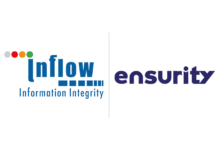The Merge sets the stage to make Ethereum faster, more scalable, and more decentralised and paves the way for further upgrades. Ethereum co-founder Vitalik Buterin believes The Merge will also help “crypto payments make sense again”
In a landmark moment for the blockchain, crypto, and Web3 sector, the Ethereum blockchain today successfully completed ‘The Merge’ – a transition from a Proof of Work (PoW) system to a Proof-of-Stake (PoS) network.
With this move, Ethereum—the dominant platform for building and running decentralised applications—cuts its carbon footprint by 99%, according to the Ethereum Foundation.
The Merge also sets the stage to make Ethereum faster, more scalable, and more decentralised and paves the way for further upgrades. Ethereum co-founder Vitalik Buterin believes the Merge will also help “crypto payments make sense again”.
The transition occurred after the chain’s Terminal Total Difficulty number (TTD) reached 58750000000000000000000 — a value set by Ethereum’s core developers beforehand. TTD is the value representing the cumulative difficulty of all blocks ever mined under Ethereum’s PoW system.
The Merge occurred instantaneously when the TTD was reached, the final PoW block was mined, and Ethereum’s Beacon Chain automatically merged with the primary chain. The Beacon Chain is Ethereum’s PoS network that has been running since December 2020.
With this, the Ethereum network continued to operate as it set about with the creation of the first PoS block on its primary network.
Impact of the Merge
With the Merge’s completion, mining nodes (that validate the format of new transactions) don’t have to compete for block rewards on Ethereum anymore. Instead, under the new PoS system, node operators will need to stake 32 Ether (ETH) to become network validators and earn rewards.
While the long-term benefits of a PoS system are well-understood, the Merge will not immediately reduce transaction speeds and gas fees in the short term. The Merge is a change of consensus mechanism, not an expansion of network capacity, and will not result in a lower gas fee, as per the Ethereum Foundation.
“Gas fees are a product of network demand, relative to the capacity of the network. The Merge deprecates the use of proof-of-work, transitioning to proof-of-stake for consensus, but does not significantly change any parameters that directly influence network capacity or throughput,” the foundation said earlier.
Ethereum’s transition to more efficient consensus mechanisms is also set to benefit blockchain networks built on top of it.
Layer-2 (L2) solutions built on Ethereum—which leverage the primary chain’s infrastructure and security— are set to become more energy efficient.
Some examples are Polygon, Optimism, Arbitrum, Loopring, and Boba Network. Polygon believes Ethereum’s move to PoS will cancel out a whopping 99.91% of its own network’s carbon emissions.
Ethereum 2.0
The Merge is part of a set of upgrades the Ethereum blockchain is undergoing for the last two years. Ethereum 2.0—a collective term used to refer to these upgrades—will enable the network to process more transactions per second, use less energy, and become more secure.
It is arguably one of the most critical pieces of the phased approach to making Ethereum the most widely-adopted chain as it sets the stage for sharding — the final phase of Ethereum 2.0.
The sharding process divides the network into subsets of nodes to improve efficiency. Instead of executing all transactions on a singular blockchain, sharding will allow Ethereum to spread transactions and computation across several subsets or partitions in the network, as per reported by YourStory.
Also read: Digital literacy encompasses 21st-century skills
Do Follow: CIO News LinkedIn Account | CIO News Facebook | CIO News Youtube | CIO News Twitter
About us:
CIO News, a proprietary of Mercadeo, produces award-winning content and resources for IT leaders across any industry through print articles and recorded video interviews on topics in the technology sector such as Digital Transformation, Artificial Intelligence (AI), Machine Learning (ML), Cloud, Robotics, Cyber-security, Data, Analytics, SOC, SASE, among other technology topics






